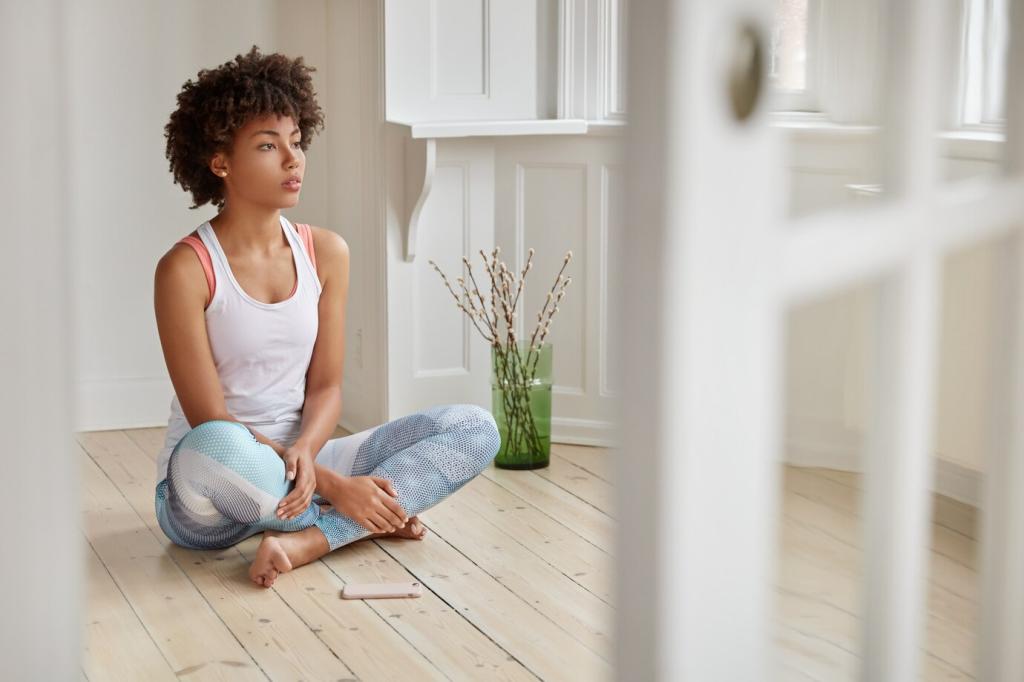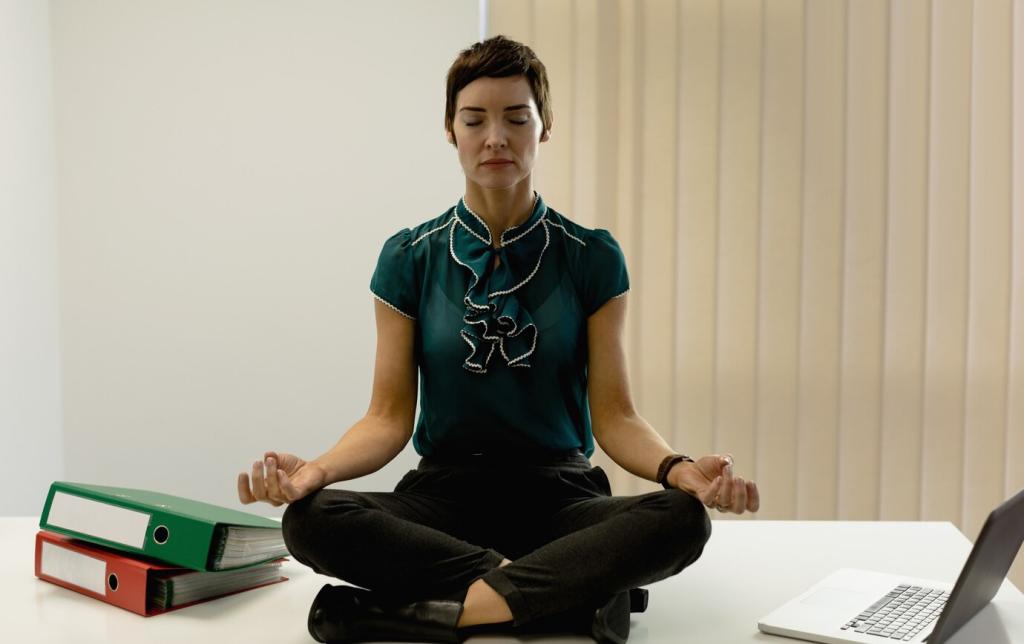Chosen theme: Basic Visualization Practices for New Meditators. Ease into meditation with gentle, imaginative cues that focus the mind, soften stress, and spark curiosity. Stay, explore, and subscribe for weekly beginner-friendly practices.
Why Visualization Helps Beginners
The science behind mental imagery
Studies show mental imagery recruits many of the same neural networks as perception, training attention without excess strain. This overlap lowers effort, boosts confidence, and encourages consistent, compassionate practice for new meditators.
Common fears and how to soften them
You might worry you cannot see vivid pictures, or that you are doing it wrong. Visualization can be fuzzy, felt, or simply conceptual. Permission to approximate turns anxiety into curiosity and sustainable progress.
A first tiny win story
Maya, a new meditator, pictured a small candle for five breaths each morning. Some days it flickered, some days it blurred, yet calm accumulated. Share your first image below and encourage fellow beginners.
Setting the Stage: Posture, Breath, and Intent
Sit upright with soft shoulders, chin level, and hands relaxed. A steady base communicates safety to the nervous system, making mental images easier to hold without gripping, forcing, or collapsing into drowsiness.


Setting the Stage: Posture, Breath, and Intent
Use gentle inhales and lengthened exhales to rhythmically guide visualization. Imagine breath sweeping color or light through the body, synchronizing sensation and image so attention feels naturally supported rather than controlled.
Core Practice: The Candle Flame
Gazing then closing
If safe, briefly look at a real candle or imagine one softly. Close your eyes and place the flame between the eyebrows. Let it glow gently, returning kindly whenever attention wanders.
Working with wandering minds
When thoughts pull you away, label it kindly as thinking, then re-see the flame’s color, shape, and halo. Each return is a repetition that strengthens the attention muscle without judgment or frustration.
Measuring progress kindly
Track how quickly and warmly you return, not how long you held the image. Fifteen supportive returns can be more valuable than one tense minute. Celebrate every small, sincere recommitment today.
Color Breathing for Calm
01
Pick a color that evokes steadiness for you—blue, green, or soft gold. Inhale the color into chest and belly; exhale tension as a fading gray. Personal resonance matters more than cultural symbolism.
02
Place a hand on your chest and imagine the color pulsing gently with your heartbeat. This entrains attention to rhythmic stability, helping images persist without strain, while emotions regulate through embodied reassurance.
03
When overwhelmed, try six slow breaths with your chosen color at your desk. Close your eyes briefly, visualize shoulders softening, and note one lighter sensation afterward. Comment with your color choice to inspire others.
Nature Scenes: Safe Place Visualization
Building sensory richness
Layer detail progressively: the sand’s texture, a pine scent, distant waves, warm light on skin. Sensory stacking anchors attention, making the scene resilient even when thoughts surge or energy dips unexpectedly.


Anchoring with a token
Place a symbolic item in your scene—a smooth stone, feather, or lantern. Touch it imaginatively when distracted, then expand outward again. Tokens act like bookmarks, helping rapid returns without frustration or self-criticism.
Many beginners experience aphantasia or low visual vividness. Use words, sensations, or metaphor—imagine the idea of a flame, or the warmth it implies. Visualization includes feeling-tones, not only pictures.
Obstacles and Gentle Adjustments
Strong feelings may surface as the mind settles. Shorten sessions, return to breath and posture, and choose soothing colors or safe-place imagery. Seek supportive community, and journal to integrate insights kindly.
Obstacles and Gentle Adjustments
After-practice reflection
Write one sentence answering, What felt steady today. Noting even tiny stability trains the brain to recognize progress. Over weeks, patterns emerge that guide compassionate adjustments without perfectionism.
Sharing with a buddy
Find a friend or online partner and exchange two-line check-ins. Accountability multiplies consistency and reduces self-doubt. Post an invitation below to connect with another beginner exploring visualization this month.
Setting a kind cadence
Begin with five minutes, four days a week. Add one minute every two weeks if it feels supportive. Subscribe for gentle reminders, fresh visualizations, and stories that keep your practice human and hopeful.
